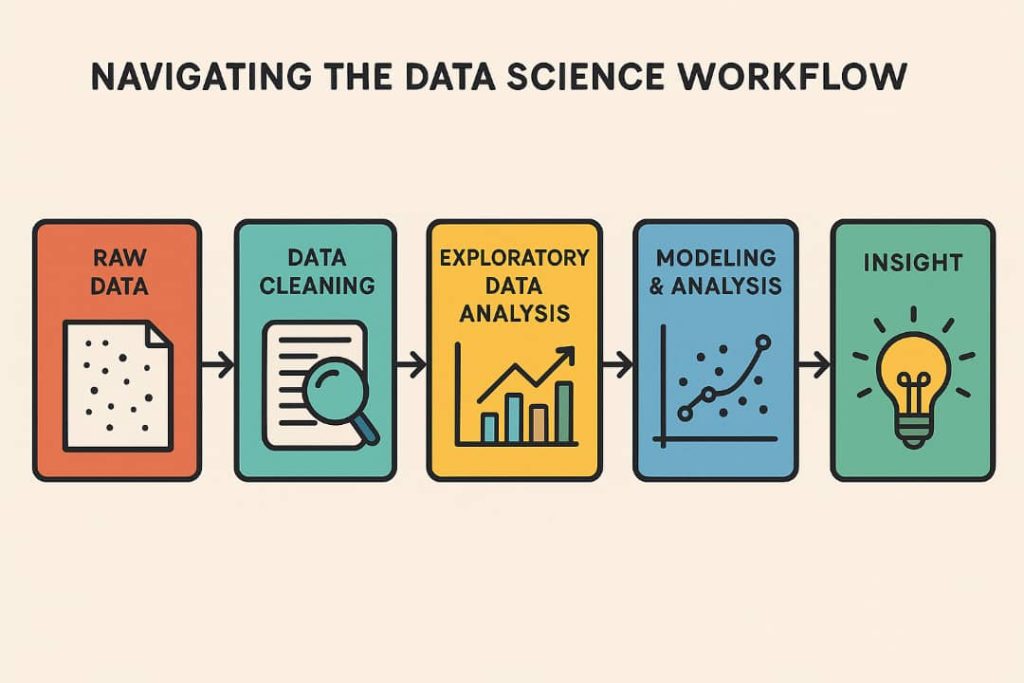Data science might sound like a complex buzzword, but at its core, it’s about telling stories hidden within numbers, spreadsheets, and databases. These stories don’t reveal themselves easily. It takes a thoughtful journey, known as the data science workflow, to turn raw data into insights that actually matter.
It all starts with the raw data scattered, unstructured, and often overwhelming. Think of it like a puzzle dumped on a table. The first task is to sort through the pieces, find what fits together, and begin to make sense of the bigger picture.
Next comes data cleaning and preprocessing arguably one of the most critical steps. This is where data scientists start hunting down inconsistencies, outliers, and missing values. Like polishing a rough diamond, this stage ensures the data is ready for meaningful analysis.
With clean data in hand, the fun really begins with exploratory data analysis (EDA). This is where trends, patterns, and surprises start to surface. It’s a bit like flipping through the pages of a mystery novel you begin to see clues and connections that weren’t obvious before.
Then comes the modeling and analysis phase. Whether it’s machine learning, statistical modeling, or predictive techniques, this is where the data scientist applies the right tools to extract deeper insights. Each method adds a layer to the evolving story, helping to build a clearer, richer understanding of the data.
Finally, we reach the ultimate goal: insight generation. This is where raw data transforms into clear, actionable recommendations. Insights that inform strategies, drive innovation, and help organizations make better decisions.
In short, the data science workflow is a blend of curiosity, technical skill, and storytelling. It’s not just about crunching numbers it’s about discovering what those numbers are trying to say. So next time you open a dataset, remember: behind every chart or model is a journey of discovery, one that turns information into impact.


